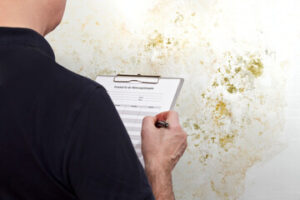When renting a restroom trailer, it’s important to choose the right company. Look for one with a qualified team who can answer any questions you may have regarding delivery, setup, purchase options, and more.

Portable luxury restroom trailers offer an upscale, sanitary environment for event attendees and site users alike. Choosing the right Portable Restroom Trailer Rental can help ensure you get top-tier facilities for your guests.
Comfortable Seating
A quality restroom trailer will have padded, comfortable seats that are easy on the back. It will also have ample room for users to sit or stand. The design should be modern and clean to create a more upscale experience for guests and employees. This is important, especially for events like weddings where guests want to feel comfortable and confident that they will find a toilet seat when they need one.
Having enough stalls and privacy stations will prevent long lines at your event. A good guideline is to have at least one toilet stall per 25 people attending your event. This will ensure that all your guests have the opportunity to use the bathroom when they need to and reduce the chance of germs spreading between people.
The type of event you are hosting will also affect how many portable restrooms you need to rent. For example, if your event is more formal or will last several hours, you may want to consider renting larger portable restroom trailers that can accommodate more people and offer more amenities. Additionally, you will want to make sure that there is sufficient space at your venue for the trailers. This will include ensuring that the trailers can be situated without blocking access routes or getting stuck under overhanging branches.
You will also want to decide if you need additional services like sinks, handwashing stations, or climate control. If you do, be sure to choose a rental company that offers these options and can provide them as part of your rental package. Finally, it is a good idea to look for features that help you keep track of the restrooms’ usage. For example, there is a mobile app that keeps track of tank levels, power sources, temperature, and security, making it easier for you to service your units.
You will also want to find a rental company that prioritizes cleanliness and hygiene standards. This will ensure that the units are cleaned and stocked before each event and are well-maintained throughout your rental period. Choosing a rental company that provides comprehensive delivery, setup, and breakdown services will be beneficial to your event’s success.
Hot & Cold Water Connection
When choosing a restroom trailer, look for ones that have hot and cold water connections. These are important because they help keep toilets, sinks, and handwashing stations clean and sanitary. Additionally, these can provide a much-needed boost of comfort for guests and workers at an event or work site.
If your event or project is located in an area with limited access to running water, consider a restroom trailer equipped with a portable water tank that can supply enough fresh drinking water for the duration of your rental period. This can also be an excellent option for events that are taking place during harsh weather conditions, such as hurricanes and tornadoes.
Having a long power cord that connects your restroom trailer to an electrical outlet or generator can make sure it has the necessary energy to function properly throughout your rental period. It is a good idea to regularly check that these power cords are free of frayed or exposed wires, as this can lead to a fire hazard. Some trailers may also offer solar-assisted capabilities, which can reduce electrical costs and environmental waste.
Another essential feature to consider is climate control in a portable restroom trailer. This will ensure that the interior temperature remains comfortable regardless of outside weather conditions, helping people feel relaxed and refreshed during their use of the restrooms. Some trailers even have advanced soundproofing techniques that maintain a quiet atmosphere so people can focus on their work or events.
Lastly, consider whether or not you want your restroom trailer to have a trash receptacle. Although this isn’t a required feature, some guests may appreciate having the ability to dispose of their garbage easily and conveniently. Many companies that rent out portable restroom trailers will provide this service for an additional cost.
Lastly, be sure to choose a company that offers a variety of rental options. Look for one that has a wide selection of quality portable restroom trailers and offers rentals of various lengths, including daily, weekly, or monthly. This will give you the flexibility to choose the rental length that is best for your needs.
Climate Control
If you’re renting portable restroom trailers for a special event, construction project, or other location where toilet facilities are limited, it’s important to consider the amenities and comfort features that will make your guests/workers happy. Luxury portable restrooms are more spacious and offer creature comforts like climate control, which can be a major difference compared to basic porta-potties. They also include a separate room for ladies and men to ensure privacy and convenience, making them the ideal choice for events with a high number of attendees or large-scale projects.
A quality portable restroom trailer will have a climate control system that regulates the interior temperature so that your guests can use the bathroom comfortably regardless of outside weather conditions. This is especially important if your event takes place during the summer when temperatures can be extreme, or in the winter when they can be cold. In addition, many portable restroom trailers feature ample space to allow guests to move around without bumping into each other or having to stand in line for too long.
You can also find luxury portable restroom trailers that are ADA-compliant, providing a comfortable and safe restroom experience for disabled guests. Some of these units will even include handicapped stalls that are sized appropriately for wheelchair access. For an added level of safety, look for a unit that is equipped with a hand-washing station and a trash disposal bin, so your guests can wash their hands properly and dispose of waste properly after using the restroom.
When it comes to selecting a portable restroom trailer for your next event or construction site, make sure you select one that is backed by a trusted rental company with a good reputation and clear terms in their rental agreements. This will help you avoid any unexpected issues and costs down the road, so you can focus on what’s important – your event or project.
A reliable rental company should provide delivery, setup, and breakdown services as part of the total package. This will save you time and hassle, as well as ensure your portable restroom trailer is delivered, set up, and ready to go when you need it. Additionally, the rental company should provide you with a detailed quote before your event begins so that you know exactly what to expect and can budget accordingly.
Waste Disposal
Portable restrooms offer a variety of benefits for events, construction sites, and other locations that don’t have traditional facilities. They provide an environmentally friendly alternative, typically include a routine service contract, and can be customized to fit your needs. However, there are some things to keep in mind when choosing the right unit for your event or location.
Waste Disposal
The best way to ensure proper waste disposal and prevent unpleasant odors is to choose a restroom trailer that includes its waste tank. This allows you to keep the unit on-site and avoid transporting sewage away from your site, protecting the environment and keeping your guests safe.
It’s also important to check in on the condition of the waste tank regularly. If the tank becomes full, it’s best to call a waste removal company for pumping services. The crew will use a large truck equipped with a vacuum connected to the portable toilet’s tank and suck the waste into its tanks for transport to a wastewater treatment plant.
Some companies even offer on-site pumping options for porta potties as well, which makes the process of removing and cleaning waste much faster. This may make sense for some businesses that rent out several units at a time.
Having access to quality restrooms will keep workers happy and healthy, increasing morale and productivity at the job site. It will also help keep your team on schedule and ensure that projects remain on track. Depending on the vendor and model, some portable restroom trailers offer luxury options like shower stalls and sinks, which can be helpful for events or long-term construction projects.
When renting a restroom trailer, it’s also worth making sure that your vendors have adequate fire-prevention supplies on hand. A few simple steps can save lives and prevent costly damage to the units, including stocking fire extinguishers and blankets near each unit. It’s also a good idea to put up “no smoking” signs both inside and outside of the trailer to help prevent accidental fires from happening. This is especially important for construction sites and events, as smoke can interact with the cleaning chemicals used in these units or cause fires if it gets into the ventilation system.



